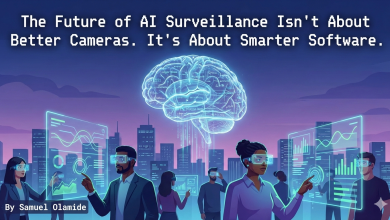
Patient care is just the tip of the iceberg when it comes to healthcare delivery. Beyond the immediate care from nurses and doctors, countless behind-the-scenes activities are needed to seamless care delivery – tests need scheduling, insurance must be cleared, medications tracked, and discharge paperwork prepared. Despite healthcare’s significant tech advances, these administrative tasks still consume far too many human hours and dollars because, let’s face it, healthcare is fragmented.
Even with all the automation and digital transformation efforts, interoperability challenges remain. Humans are still left manually bridging these digital gaps. But what if there was a smarter solution, an AI that didn’t just highlight the issues but actually solved them proactively? That’s exactly the promise of Agentic AI.
The missing piece in unified care coordination
Over the years, we have seen waves of innovation that each solved a piece of the puzzle, but never fully bridged the silos:
· Data Analytics helped identify risks like detecting potential cases of sepsis early. Yet, after raising these red flags, it still fell to healthcare workers to follow through on next steps manually.
· Robotic Process Automation (RPA) streamlined rule-based repetitive tasks, but hit a wall when exceptions or anomalies occurred, immediately pushing tasks back to humans.
· Generative AI (LLMs) transformed patient communication and documentation but couldn’t independently adapt, plan, or persist through a complex workflow.
Let’s say a patient comes in with ambiguous symptoms. Data analytics might flag a certain risk profile, RPA might fill out an MRI request automatically, and an LLM-based chatbot might inform the patient about potential next steps. But if the MRI is delayed or an insurance rule changes last-minute, someone still has to coordinate the puzzle pieces.
These solutions, while valuable, still left one major gap: end-to-end orchestration. They never fully replaced the need for manual coordination across departments and still rely on people to stitch together each fragment. That’s the gap Agentic AI fills.
Agentic AI: Orchestrating end-to-end solutions
Unlike its predecessors, Agentic AI orchestrates entire processes autonomously. It sets a broader objective, such as discharging a patient safely, or verifying and settling a complex insurance claim, and then independently navigates every subtask to get there. It’s not waiting for humans to keep it moving. Instead, it continuously checks for what’s missing, what’s delayed, and how to re-route a process if needed. Agentic AI works because:
1. It learns and remembers. If a particular policy or schedule changes, the AI adapts the plan rather than asking a nurse or administrator to fix things manually.
2. It persists. Tasks don’t just disappear into the ether when something goes wrong; the AI circles back, solving the root issue or finding an alternative route.
3. It speaks multiple ‘languages.’ Whether it’s an EHR platform, an insurance portal, or a pharmacy system, Agentic AI integrates these silos by communicating seamlessly behind the scenes.
The impact becomes especially clear with complex conditions like heart failure or diabetes, where multiple specialties, tests, and coverage approvals each form a link in the chain. Agentic AI doesn’t just highlight the chain — it keeps it intact and functional, even if a link wobbles. Agentic AI removes the burden by:
● Orchestrating multiple steps. It knows a lab test needs to happen before an MRI and checks coverage in parallel. If insurance denies coverage for an MRI, the AI proactively revises the request or seeks an alternative.
● Seeing the end goal, not just the next task. If the patient has to be discharged within a certain window, the AI lines up every test, follow-up, and necessary consult to hit that target safely.
● Preempting delays and errors. If a lab result doesn’t arrive on time, the AI pings the lab or reassigns the test. If a specialist is unavailable, it suggests another qualified person, without dumping the problem on a human scheduler.
By continuously orchestrating tasks, Agentic AI effectively bridges the long-standing divide between “knowing what needs to be done” and “ensuring it all actually happens.”
Agentic AI in action
Leading healthcare players are already implementing Agentic AI, and the results are compelling.
· ICU discharge planning: Hospitals are using Agentic AI to autonomously manage patient discharge processes from ICUs. The AI analyzes each patient’s history, diagnoses, and required follow-ups to accelerate discharge decisions, significantly reducing costly hospital stays, risk, and administrative burden.
● Claims and denials management: Payers are deploying Agentic AI to proactively handle claim denials, autonomously revising and resubmitting claims. The AI reviews payer histories, adapts documentation to fit each insurer’s evolving rules, and flags anything missing. It catches issues early, cutting down on denied claims and tedious appeals.
● Coordinating chronic care: Healthcare organizations are also applying Agentic AI to coordinate complex patient care for conditions like diabetes or hypertension that involve multiple specialists and frequent lab tests. Agentic AI can significantly improve patient outcomes by autonomously scheduling appointments, managing medication adherence, etc.
● Streamlining diagnostic workflows: A suspicious finding on an MRI might require follow-up blood work and specialist input. Agentic AI identifies these dependencies, requests the tests, checks schedules, and ensures results reach the right clinician. No more manual follow ups or overlooked instructions.
Getting started: A 10-20-70 approach
While the benefits are obvious, implementing and scaling Agentic AI isn’t just about technology. It needs a shift in how teams collaborate, how data moves, and how tasks are assigned – it’s a “10-20-70” game:
● 10% centers on the AI model itself—training algorithms, refining capabilities.
● 20% involves technology and data infrastructure, ensuring seamless integration among disparate platforms.
● 70% focuses on people, processes, and organizational change.
The key is to start with processes that are ambiguous and complex, where end-to-end transformation is needed. It’s also important to have the right technical capabilities in your organization because these frameworks are extremely complex.
Balancing autonomy and accountability
The autonomy that powers Agentic AI also raises important questions about accountability. Healthcare is subject to strict regulations, including HIPAA, and the risk of error is significant. To mitigate this, well-structured agentic systems:
● Log every decision and the data behind it, enabling post-hoc analysis if something goes wrong.
● Involve human reviews at key points, especially when a decision carries a high clinical or financial impact.
● Incorporate built-in safeguards, like escalating uncertain cases for expert confirmation rather than moving forward blindly.
This ensures that while the AI handles routine orchestration, crucial judgment calls remain in human hands.
A new standard for intelligent care
The transition towards Agentic AI in healthcare is just beginning. Healthcare organizations are increasingly adopting centralized orchestration platforms that manage multiple AI systems. These platforms ensure cohesive integration of diverse AI capabilities, maximizing the overall impact and value delivered to healthcare providers and patients.
This orchestrated intelligence has the potential to finally solve healthcare’s longstanding coordination issues, enabling caregivers to refocus on patient interaction rather than administrative firefighting.
Early adopters have reported streamlined workflows and fewer process hiccups as the system flags potential slowdowns and resolves them on its own. When done right, this orchestrated intelligence fosters a care environment that reacts in real time and empowers healthcare providers to do what they do best: providing exceptional patient care.
About the Author:
Rajan Kohli is the CEO of CitiusTech, a leading provider of healthcare technology and consulting services. With 30 years of experience in the tech services and consulting industry, Rajan is a highly accomplished executive and transformative CEO with a track record of driving business turnarounds and accelerating growth through strategic vision, innovation and execution excellence. Well known for his passion for clients, growth mindset, and ability to drive organizational transformation,
Prior to CitiusTech, Rajan has spent over 27 years at Wipro and was the president of Wipro’s iDEAS (Integrated Digital, Engineering and Application Services) business. Rajan graduated from the Indian Institute of Management (IIM), Bangalore, with a specialization in marketing and finance. He also holds an Engineering degree in electronics and communications from Punjab Engineering College (PEC), Chandigarh.




